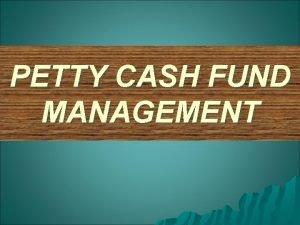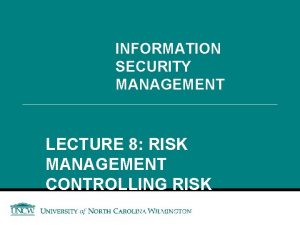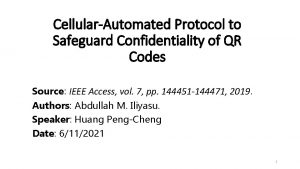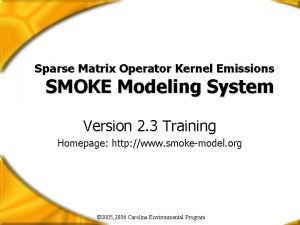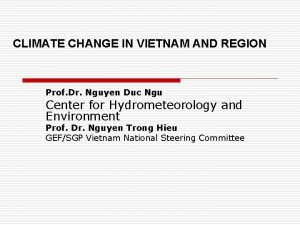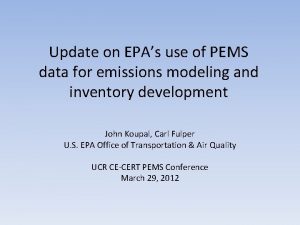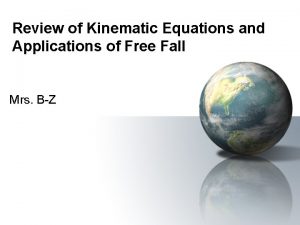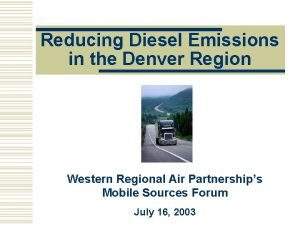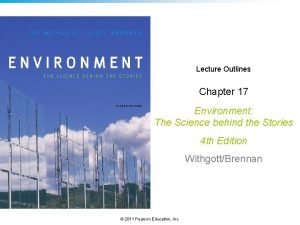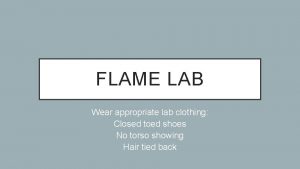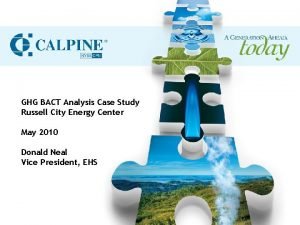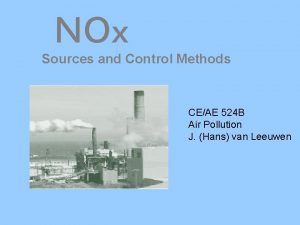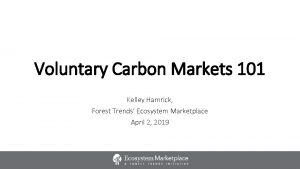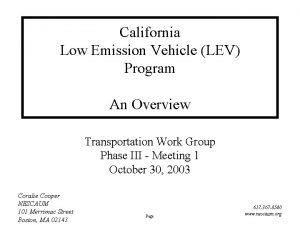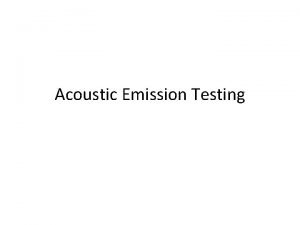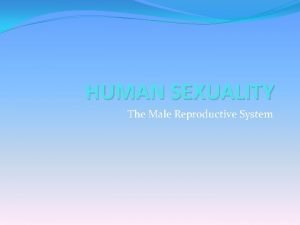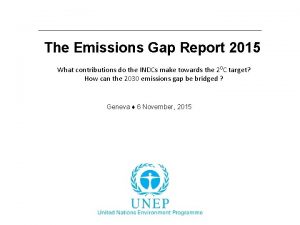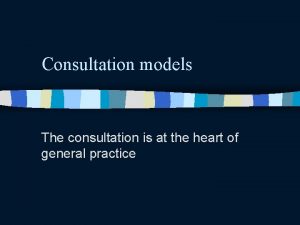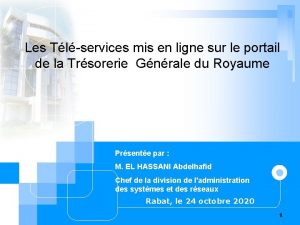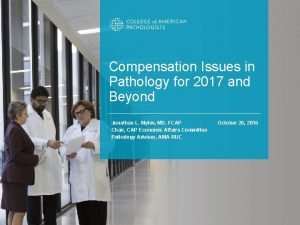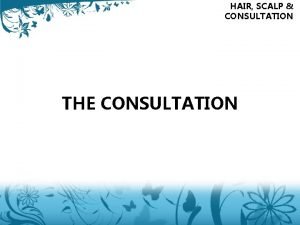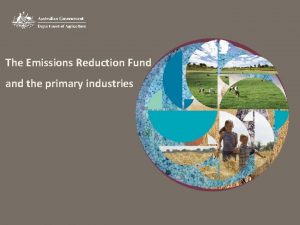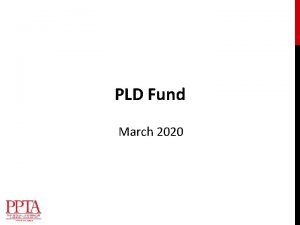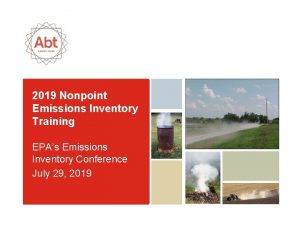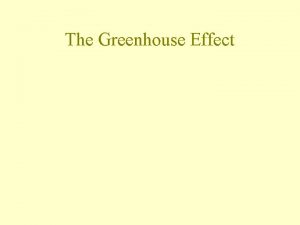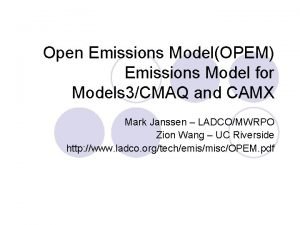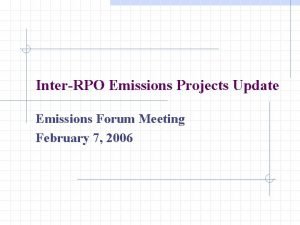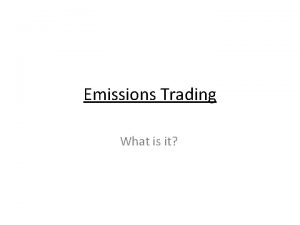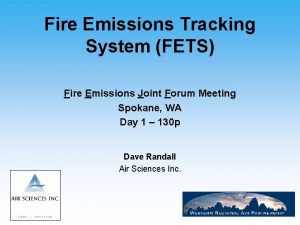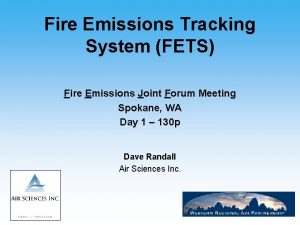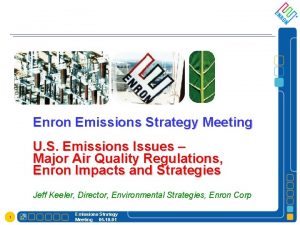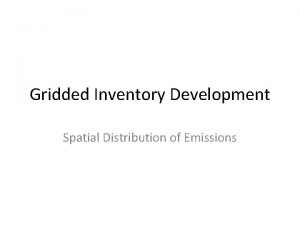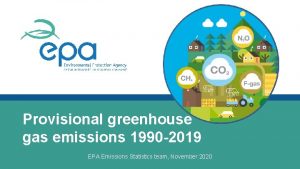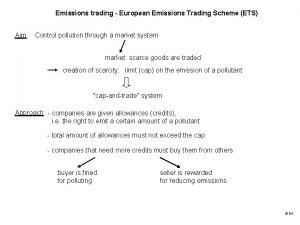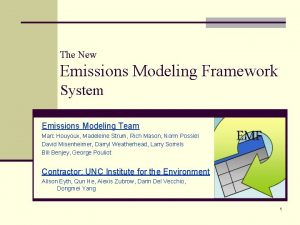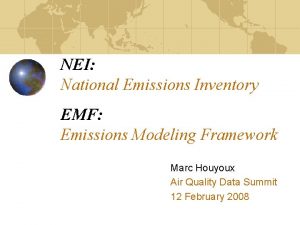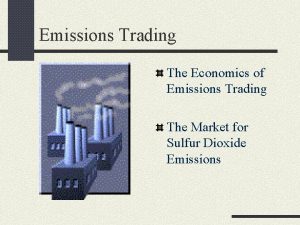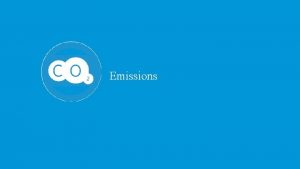Emissions Reduction Fund Safeguard Mechanism Consultation Paper March




























- Slides: 28

Emissions Reduction Fund Safeguard Mechanism Consultation Paper March 2015

The ERF has three key elements: Crediting Purchasing Safeguard 2

Consultation Submissions are invited on the safeguard consultation paper prior to midday, 27 April 2015. For further information, please email: Emissions-Reduction. Submissions@environment. gov. au Dec 2013 Emissions Reduction Fund Green Paper Apr 2014 Emissions Reduction Fund White Paper Nov 2014 Emissions Reduction Fund legislation enacted March 2015 Safeguard mechanism consultation paper July 2015 Safeguard mechanism draft legislative rules Oct 2015 Safeguard mechanism final legislative rules July 2016 Safeguard mechanism commences 3

Safeguard legislation • The high level framework of the safeguard mechanism was legislated as part of the Carbon Farming Initiative Amendment Act 2014. • Once commenced, the safeguard mechanism will be part of the National Greenhouse and Energy Reporting Act 2007. • The detailed design of the safeguard will be implemented through legislative rules and regulations. 4

Decisions already taken ERF White Paper Coverage • NGER facilities with direct emissions of more than 100 kt CO 2 -e per year CFI Amendment Act • Safeguard obligation rests with the person with operational control of the facility. • JPDA and Greater Sunrise excluded from coverage. Baselines for existing facilities • Facility level, absolute emissions set at highest emissions over the period 2009/10 to 2013/14. • Baselines for new investments Set to encourage new entrants to achieve and maintain best practice. • ACCUs can be used to reduce net emissions. Emissions management and compliance • Net emissions are adjusted for ERF projects to avoid double counting abatement. • Safeguard obligation is ongoing. • Final sanctions include a civil penalty and/or injunction. 5

Safeguard mechanism: sectoral coverage Metal manufacturing 10. 4% Coal mining 9. 7% Electricity emissions 57% Other safeguard emissions 43% Other Manufacturing 8. 0% Oil and gas 7. 5% Transport 3. 7% Waste 0. 6% Metal ore mining 3. 2% Around 140 businesses (or 330 facilities) are expected to be covered by the mechanism in 2016/17. 6 Source: Departmental estimate based on emissions in 2013 -14 from likely covered facilities.

Consultation Paper: Baselines 7

Possible arrangements for new investments Breach threshold before 1 July 2020 5 years of NGER data between 2009‑ 10 and 2013‑ 14 YES Historical Baseline Highest emissions between 2009 -10 and 2013 -14. OR 3 years over 100, 000 t. CO 2 -e during this time Independent Assessment Approach NO OR Facility elects to use historical data between 2009‑ 10 and 2013‑ 14, where available. Breach threshold after 1 July 2020 Best Practice Benchmark 8

Independent Assessment Approach Facility meets criteria as a new entrant or significant expansion Facility estimates highest production level and associated EI for the first three years over 100 kt/after expansion Facility submits application along with a limited assurance engagement conclusion from a registered NGER auditor CER makes baseline determination according to the application Baseline is revised after the three year period based on actual production high point 9

Independent Assessment Approach Initial Baseline (emissions) Revised Baseline (emissions) Estimated Production x Estimated Emissions Intensity Actual Year 2 Actual Year 1 Estimated Actual production Estimated production Year 3 Year 4 Actual Production x Estimated Emissions Intensity Year 5 Baseline reflects application submitted by the facility, including a limited assurance engagement report from a registered NGER Auditor. 10

Best Practice Benchmarks Initial Baseline (emissions) Estimated Production x Best Practice Benchmark Emissions Intensity Revised Baseline (emissions) Year 1 Year 2 Year 3 Year 4 Actual Estimated Actual production Estimated production Actual Production x Best Practice Benchmark Emissions Intensity Year 5 Baseline established using best practice benchmark, based on average emissions-intensity of top 10 per cent of industry peers. 11

Baselines to be consistent with emissions reporting Baselines could be changed in some circumstances, such as: • Changes to emissions estimation • Not changed if moving to a higher order method • Recalculated if GWPs change • Vertically integrated production processes • CER could pro-rata baselines or facility could submit data • Changes to facility boundaries • CER could pro-rata baselines or facility could submit data 12

Consultation Paper: Emissions Management 13

Managing excess emissions Apply for a multi-year monitoring period Baseline Emissions above baseline Baseline 3 year average Apply for significant expansion Revised baseline Expansion Baseline Surrender eligible offsets Offsets Baseline setting period: Baseline reflects highest emissions between 2009/10 and 2013/14. Safeguard mechanism operational Baseline Apply for an exemption, for example due to natural disaster

Option - apply for a multi-year monitoring period Baseline 3 year average Year 1 Year 2 Year 3 Year 4 Year 5 Year 6 This would allow averaging of emissions over time, helping to accommodate natural variability in emissions. Applications could be assessed by the Clean Energy Regulator, having regard to: • whether the operator has previously met all of its safeguard requirements; and • whether the operator has provided satisfactory evidence that the emissions could be returned to baseline levels over the 15 extended period.

Option - apply for a significant expansion adjustment Baseline revised based on new investment policy Revised Baseline Capacity Capacity Baseline Year 1 Year 2 Year 3 Year 4 Year 5 More than 20% increase in capacity Significant expansions could be defined as an increase in production capacity of more than 20 per cent that results from the installation of new plant or 16 equipment.

Option – Surrender Eligible Offsets Credits issued under the Emissions Reduction Fund— also known as Australian Carbon Credit Units or ACCUs—will be eligible offsets under the safeguard mechanism. Offsets could be surrendered at any time. Year 1 Year 2 Year 3 Offsets Year 3 - Net Emissions (Section 22 XM of the Act) 17

Option – Apply for an Exemption • The Clean Energy Regulator could disregard emissions increases linked to an exceptional event if reasonable steps were taken to mitigate the risk of the increase. Exceptional events are: • natural disaster; and • criminal activity. • Events that reflect normal operations or market dynamics, such as: • changes to price; • production inputs and outputs; or • maintenance; . . . are not proposed as eligible for exemption. 18

Double counting - problem Emissions reductions (actual) ACCUs surrendered Emissions (if no project) Emissions number (after project) 19

Double counting - solution ACCUs issued are added to the emissions number in the relevant financial year. ACCUs added to baseline Emissions reductions (actual) The emissions number is then reduced when the ACCUs are surrendered or sold to the Government under an ERF contract. ACCUs surrendered Emissions (if no project) Applicable emissions number (after surrendering ACCUs from project) Net emissions 20

Graduated compliance process (indicative) Apply for an extended monitoring period, significant expansion or exemption Options available to the facility before an excess emissions situation exists Surrender offsets Enforcement options available to the Clean Energy Regulator if a facility is in an excess emissions situation Infringement notice Injunction Civil penalty 21

Inherent emissions variability associated with existing natural resources and reserves A facility could apply in 2016 -17 for a baseline using the independent assessment approach if: • there is a natural resource or reserve associated with the operation of the facility; • the grade or depth of the resource or reserve will have a direct effect on the emissions performance of a facility; • the facility has limited ability to control for such emissions; and • facility emissions are expected to exceed their historical baseline and the change in natural resource grade or depth is the primary reason for this. 22

Consultation Paper: Administration 23

Publication of information To ensure that information about the effectiveness of the safeguard mechanism is available to the public, the Clean Energy Regulator could publish information relating to: • facilities covered by the safeguard mechanism; • baseline determinations for each facility; • baseline applications for new investments; • covered emissions and surrendered offsets for each facility; • facilities that have a multi-year monitoring period; • operators whose emissions over the monitoring period exceed their baseline; • facilities declared exempt from safeguard obligations due to exceptional circumstances. 24

Operational review of the safeguard mechanism A review could be conducted in 2017 -18 and cover the following elements: • the operation of the safeguard mechanism in concert with the purchasing and crediting elements of the ERF; • the effectiveness of the independent assessment approach for new investments already underway; • the transition from independent assessment to an output-based approach for new investments; • any arrangements for existing facilities to adjust baselines; • the operation of the safeguard mechanism in the electricity sector with reference to the Renewable Energy Target; and • the scope and timing of the next review. 25

Consultation Paper: Electricity Sector 26

Electricity safeguard mechanism • The Government is exploring a sectoral baseline as an alternative to individual baselines for the electricity sector. • A sectoral baseline may account for the interconnected nature of the electricity grid. • If the sectoral baseline is exceeded then average individual generator baselines could apply from following financial year. • Once enacted, average individual baselines would continue each year. Thereafter, the sectoral baseline would not be re-established. • Emissions management and new investment policy is proposed to remain broadly consistent with general safeguard approach. 27

The sectoral baseline option – illustrative example Individual generator emissions Total sector emissions Generator emissions t. CO 2 -e Sectoral baseline Individual baselines apply from following financial year and continue thereafter Offset emissions Yr 1 Yr 2 Yr 3 Yr 4 Individual baseline Yr 5 Yr 6 Yr 7 28
 March march dabrowski
March march dabrowski Fluctuating and imprest system
Fluctuating and imprest system Safeguard your business
Safeguard your business Working together to safeguard children 2018
Working together to safeguard children 2018 How is the value of a safeguard to a company calculated?
How is the value of a safeguard to a company calculated? Safeguard hosting
Safeguard hosting Safeguard qr code
Safeguard qr code Sparse matrix operator kernel emissions
Sparse matrix operator kernel emissions Ghs emissions
Ghs emissions Pems emissions modeling
Pems emissions modeling Otto emissions is driving his car at 25.0 m s
Otto emissions is driving his car at 25.0 m s Diesel emissions denver
Diesel emissions denver Particulates can be removed from smokestack emissions by
Particulates can be removed from smokestack emissions by Where else have you observed colorful light emissions
Where else have you observed colorful light emissions Using citys heat reduce emissions
Using citys heat reduce emissions Sources of nox emissions
Sources of nox emissions Un emissions gap report
Un emissions gap report California lev
California lev Volkswagen code of ethics
Volkswagen code of ethics Application of acoustic emission testing
Application of acoustic emission testing Parts of a sperm cell
Parts of a sperm cell Un emissions gap report
Un emissions gap report Aice english paper 2
Aice english paper 2 Aice general paper essay example
Aice general paper essay example Neighbours consultation model
Neighbours consultation model Portail de la trésorerie générale du royaume
Portail de la trésorerie générale du royaume Microslide consultation
Microslide consultation Wedding consultation form
Wedding consultation form Www.consultationskillsforpharmacy.com
Www.consultationskillsforpharmacy.com

